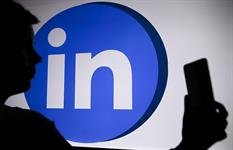X is too toxic and has lost its Twitter luster.
Threads and Blue Sky haven’t taken off as platforms with the scale to accommodate discussions about business, branding and marcomms.
LinkedIn has stepped into the vacuum and become the default hangout for those wanting to engage in such discourse.
Cofounded in 2002 by Reid Hoffman and four others, the Mountain View-headquartered social network was acquired in 2016 by Microsoft for $26.2 billion. It has evolved from a job search network into a smorgasbord of opinion, humble bragging, disputes, content (both LinkedIn created and user-generated) and an owned media channel for companies and brands.
The latter usage has made it very relevant for PR pros, because it’s becoming an extension or vehicle for employee engagement and public announcements. In some cases, it’s replacing the press release.
Pfizer CEO Albert Bourla used LinkedIn to share his internal note to the pharma giant’s staff about chief corporate affairs officer Sally Susman stepping down at the end of the year. In certain circumstances it allows the company to shape and control the narrative on a story without having it parsed through the lens of third-party media, which can be beneficial. There was certainly much more to that story for those prepared to dig around a little, including the departure of three other senior comms execs, including CCO Ed Harnaga.
It’s where debates happen about issues such as the Astronomer reputation crisis when the CEO and head of HR were caught on camera canoodling at a Coldplay concert and the subsequent response spoof ad featuring the band’s frontman’s ex-wife, Gwyneth Paltrow, as a so-called “very temporary spokesperson” for the B2B tech brand.
Wannabe business influencers regularly peddle their views on this and many other business and marcomms issues. Some of them are genuinely interesting. Others are pompous in the extreme. Some are inflammatory. Others are just plain annoying. Or repetitive.
Some are doing it for clicks, others are doing it to promote their business or consultancy. All of them are doing it for self-promotion in some form or fashion — myself and PRWeek included.
In recent months I have noticed an uptick in the type of toxicity I thought I’d left behind on X. The keyboard warriors are also out in force on LinkedIn, something most of us have experienced at one time or another. Their specialty is weighing in on a subject based on scanning a few comments or a headline without bothering to investigate further to try and understand both sides of a story.
Possibly the most annoying habit that is now infesting the social network is the humblebrag, where individuals comment on something or praise an individual purely to shine a light on their own achievements and make themselves feel good. Then there are the folks who straight up try to sell you stuff. These people are instantly deleted from my network. This is not what I signed up for.
Taken together, the background noise on LinkedIn is becoming increasingly intrusive and impacting the user experience.
There is clearly also a lot of tweaking of the LinkedIn algorithms that results in one piece of content getting vastly more engagement than another for no apparent reason. And there have been examples of fake profiles being used to propagate scams, spam or impersonation, including in the PR sector.
LinkedIn is still a fantastic resource and extremely useful for PR pros, journalists and businesspeople. But it must protect against evolving into the type of toxic soup environment that now characterizes X.















